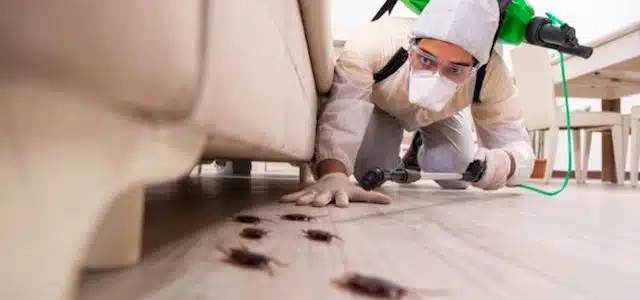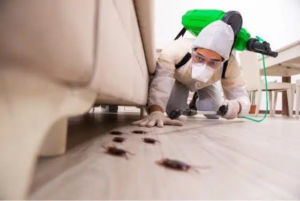Rodents are a constant threat to stored products. Regular inspection can help to identify problems early and prevent infestations.
Look for signs of rodent activity such as droppings and gnaw marks. A musty odor can also indicate rodent activity. Contact Rodent Control Boston now!

Seal entry points, especially around doors and windows, with materials that rodents cannot gnaw through such as steel wool or cement.
Rats
Rats, the most common rodent pest, thrive in close proximity to people in urban areas where food processing plants, warehouses and homes provide abundant shelter and food. While primarily nocturnal, rats are also active during the day and may be seen exploring yards, parks and gardens. They often enter buildings through secluded entry points such as gaps and cracks, and through open windows or doors that have been warped or damaged by weather. Droppings and gnaw marks are obvious indicators of a rat infestation.
In addition to contaminating food and water, rats spread diseases by biting humans and by spreading germs through their droppings, urine and saliva. The pathogens in rodent waste can cause serious illness and disease in people including typhus, leptospirosis and food-borne illnesses such as salmonella and E coli. Plague, a severe and potentially fatal disease, has been reported in wild rat populations but is rare among commensal species such as house mice. Rodents also carry ticks, mites and fleas which can also spread diseases.
The best way to prevent a rat problem is through rodent exclusion, which includes sealing openings larger than 1/4 inch and installing self-closing and storm door closers on frequently used doors. In addition, it is important to clean and store food in metal or glass containers and to properly close drains, vents and chimneys. Regularly inspecting your yard for signs of rat activity is also essential.
Unless properly implemented, chemical control methods for rat and mouse infestations are essentially useless. For example, poisons placed under or around the home are often ineffective because rats and mice are capable of sensing and avoiding these substances. In addition, poisons can also pose a danger to children and pets if they are accidentally exposed or consumed.
Terminix’s specialized technicians are trained to identify conditions that attract rodents, locate and access points into homes, and assist with effective rodent control strategies. These include blocking access to food, water and shelter; removing secluded nesting sites; relocating garbage cans, dumpsters and woodpiles away from the home; and placing traps in secluded locations where rodents travel such as along walls. These traps can be baited with peanut butter or other non-toxic food sources that are attractive to rodents.
Mice
Rodents such as mice and rats can carry diseases that threaten people, pets and livestock. Infection occurs through bite wounds, or by ingesting food or water that is contaminated with rodent droppings or urine. These pathogens can also be spread through feces, saliva and ticks and mites that are carried on rodents or by handling dead rodents. Rodents are nocturnal and hide during the day, making them difficult to detect until an infestation becomes severe. In addition, mice have the ability to gnaw through plastics and electrical wiring which can cause fires and failure of appliances such as freezers or clothes dryers.
Mice are prolific breeders with litters of 5-12 pups after a 19-day gestation period. Like rats, they are omnivorous and will eat just about anything. They will nest and burrow in insulation, wires, drywall and more. They are excellent climbers and can jump 12 inches from the ground, so they are able to access all areas of your home. In addition, they leave pheromone trails on the walls and baseboards to mark pathways for future use.
The best way to prevent mice is to eliminate attracting foods, such as crumbs, and clear away hiding places, such as clutter. Regular property inspections are also important, as rodents can squeeze through openings the size of a dime or quarter and enlarge them with their gnawing. Sealing cracks and crevices can also be a significant deterrent, especially since rodents enter homes from the outside.
Our technicians can install tamper-resistant bait stations and traps inside your home or business, placing them at 8-to-12-foot intervals, depending on the severity of the rodent problem. Indoors and out, we can place rodent deterrent devices such as grates over drains and screens over vents. We can also put down pipe collars around the outside of pipes where they meet and around foundation vents, doors, soffit vents and gable vents to help prevent rodent entry. In addition, we can prune shrubbery and trees to keep them from growing too close to structures. These and other exclusion measures can reduce the need for rodenticides, which should only be used as a last resort.
Squirrels
Squirrels can be nuisance pests, and they may damage your property, but they also carry fleas, ticks, and other diseases. The best way to prevent squirrels from getting into your home is to enclose your property in barriers, keep food and pet waste indoors, and avoid hanging fruit branches over the house. You might notice signs of squirrels inside your home, including holes chewed in sills, rafters, and walls; chewed or stripped plastic on electrical wires; and gnawed twigs and branches that have been brought indoors. You might also hear scratching, squealing, and rustling noises in the walls.
Because of the destruction of their natural habitats, squirrel populations are in decline, and they seek warmth, shelter, and food wherever they can find it, including in houses and businesses. They often build nests in attics, eaves, vents, and other small spaces, where they can breed and have offspring. They are also known to gnaw on electrical wiring and cause outages, as well as destroy daffodils, snowdrops, tulips, allium, hyacinth, and other flowers.
PMPs can help homeowners and business owners prevent squirrel intrusions by recommending early intervention, such as repellents and traps. Repellents such as red pepper flakes and water-ammonia mixtures can be applied to window frames, garbage cans, or any areas that need to be deterred. Traps should be used only when no pets or humans are at risk. It’s important to inspect a structure twice a year for potential entry points. Fill in or block smaller openings with steel wool and caulk. Stuff larger openings with wire mesh and/or sheet metal. Inspect sills, siding, eaves, soffits, chimney flashing, and gutters for rodent entry points.
Squirrels can be difficult to get out of a home once they’re in, so it’s important not to panic or harass them. Chase, yell, or throw things at them, and you’ll only scare them and make them more likely to run back into your house. If you see a squirrel in your house, don’t chase it or throw anything at it; instead, close all doors that open to other rooms, and make sure the squirrel can see its escape route out of the house.
Other Rodents
Rodents are a common pest for homes and businesses. Their feces, urine, and chewing damage can lead to health problems as well as costly repairs. In addition, rodents can spread many diseases to humans by acting as carriers for ticks and fleas. Some of these diseases include Hantavirus, rat-bite fever, plague, salmonellosis and leptospirosis.
The members of the order Rodentia are diverse in their ecology and lifestyles, living on land or water and adapted to a wide range of environments. However, they do share several characteristics including small bodies and short limbs. They are able to climb, run, and jump using their hind legs, and they have sharp teeth that continue to grow throughout the animal’s life.
Some of the most well-known rodents are mice, rats, and squirrels. They have poor eyesight and rely on touch, smell, and hearing to navigate their environment. They also have a strong instinct to gnaw on just about anything. This behavior is driven by the need to wear down their incisors, which are constantly growing. Rodents chew on wood, wires, insulation, and more. This can lead to fires, floods, and structural damage.
Another common rodent is the beaver. These animals are incredibly adaptable and can survive in both forests and wetlands. They are known to build dams, gnaw wood, and swim. Like other rodents, beavers eat plants as well as seeds and grains. Beavers are classified as herbivores, but they will also eat fruit and some insects.
Pocket gophers are a species of rodent that is found in Central and North America. They are burrowing rodents that are also considered to be herbivores. This species of rodent is a pest because it destroys crops and can be a nuisance in the home by gnawing through pipes, electrical wires, and foundations.
If you suspect rodents are living in your home, contact PURCOR. Our professionals can inspect for rodent signs of entry, such as droppings, urine stains and odors, and chewed wires. To prevent rodents from entering your home, keep garbage cans and trash bins tightly closed, store pet food in sturdy containers, and clean up spilled food immediately.


